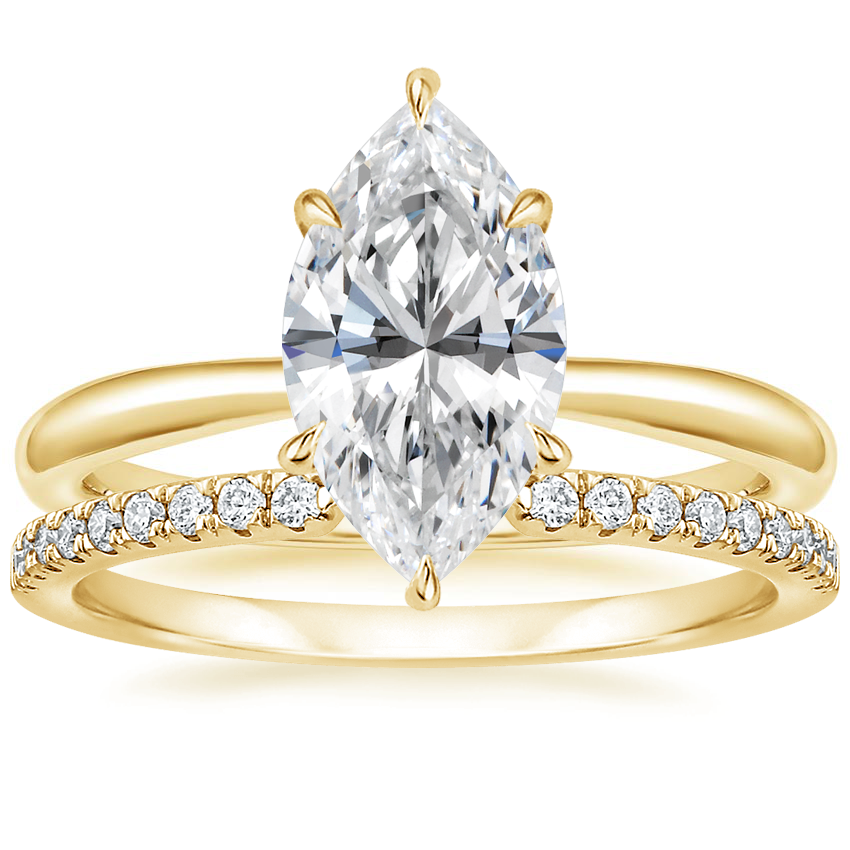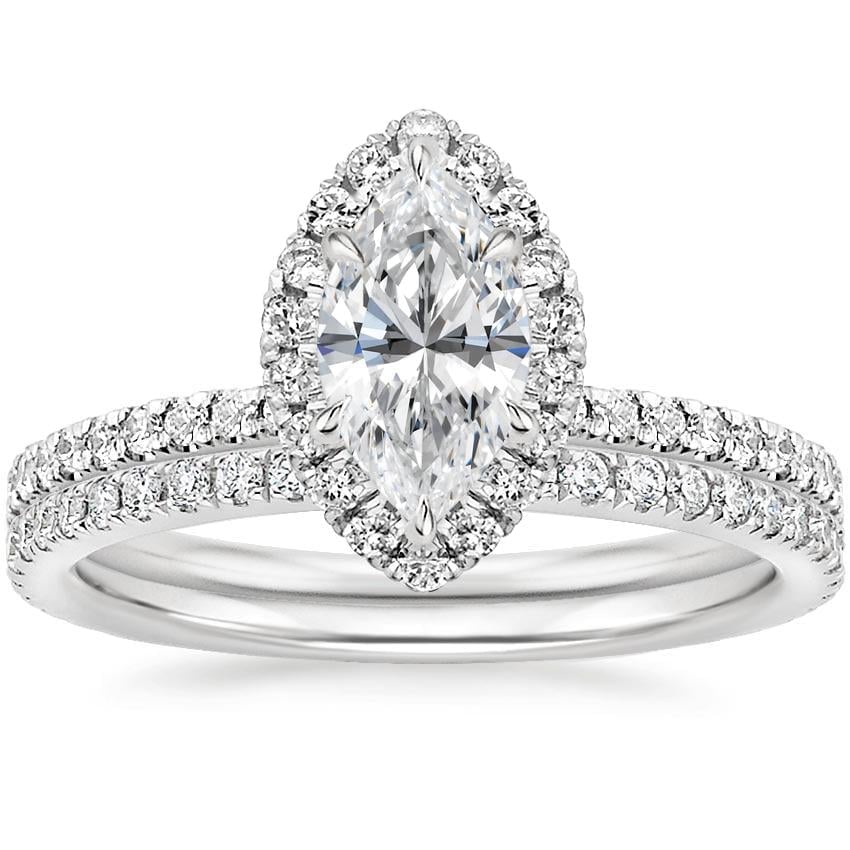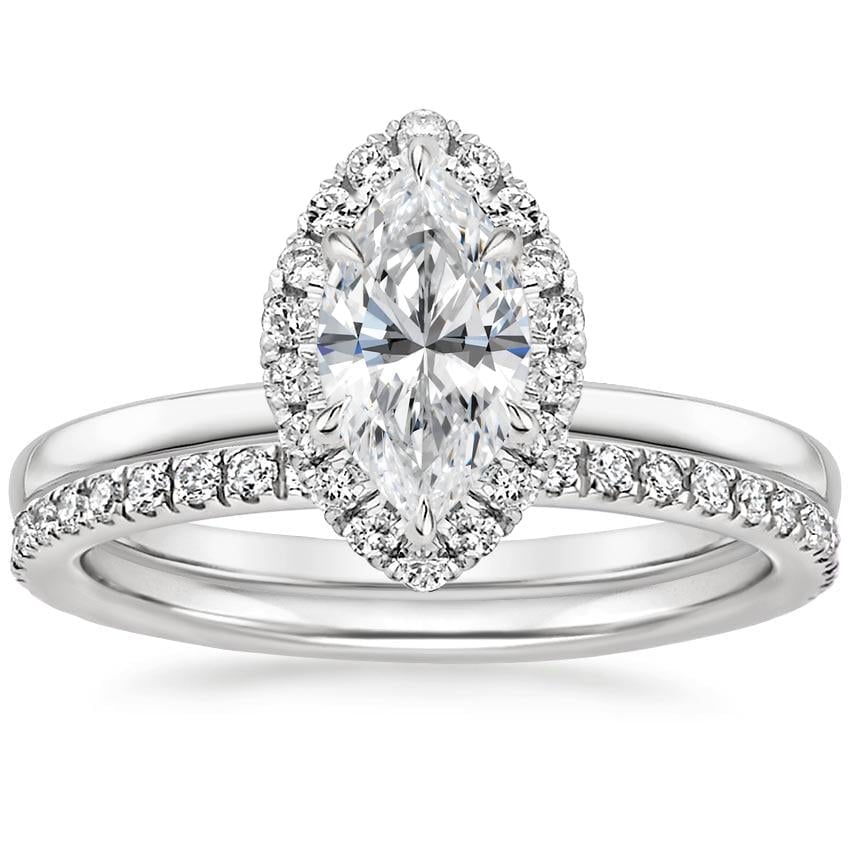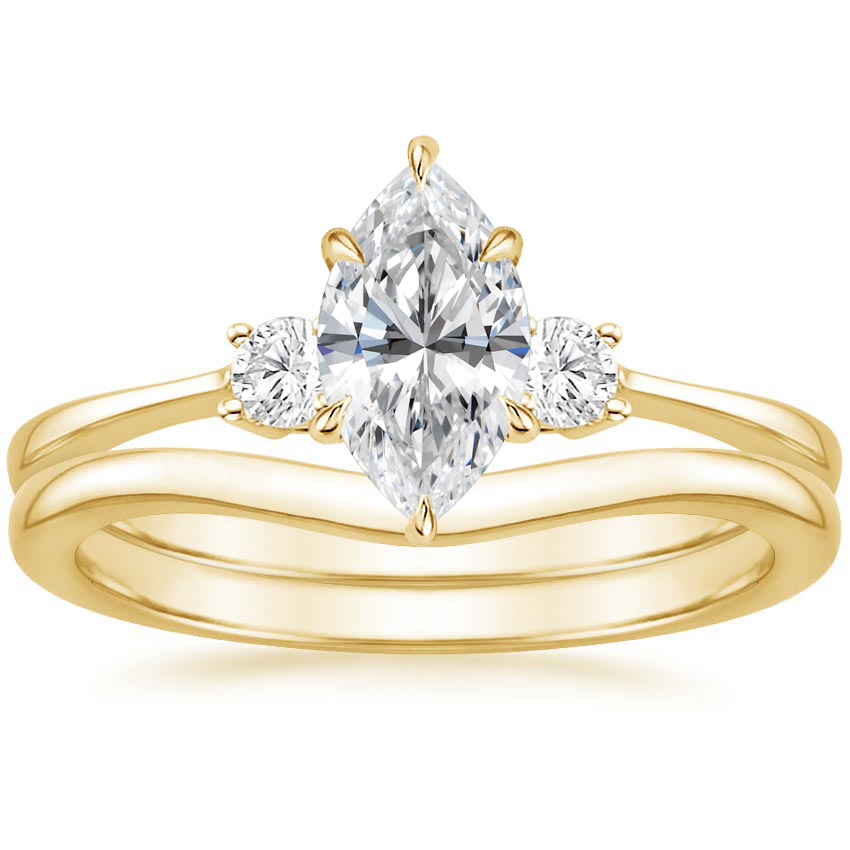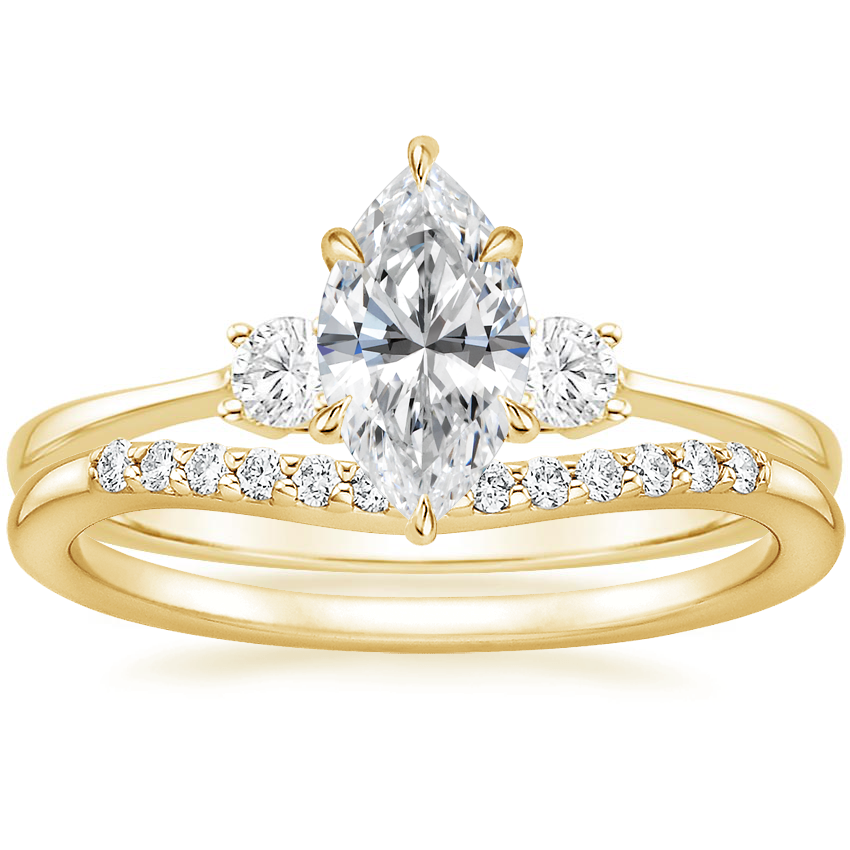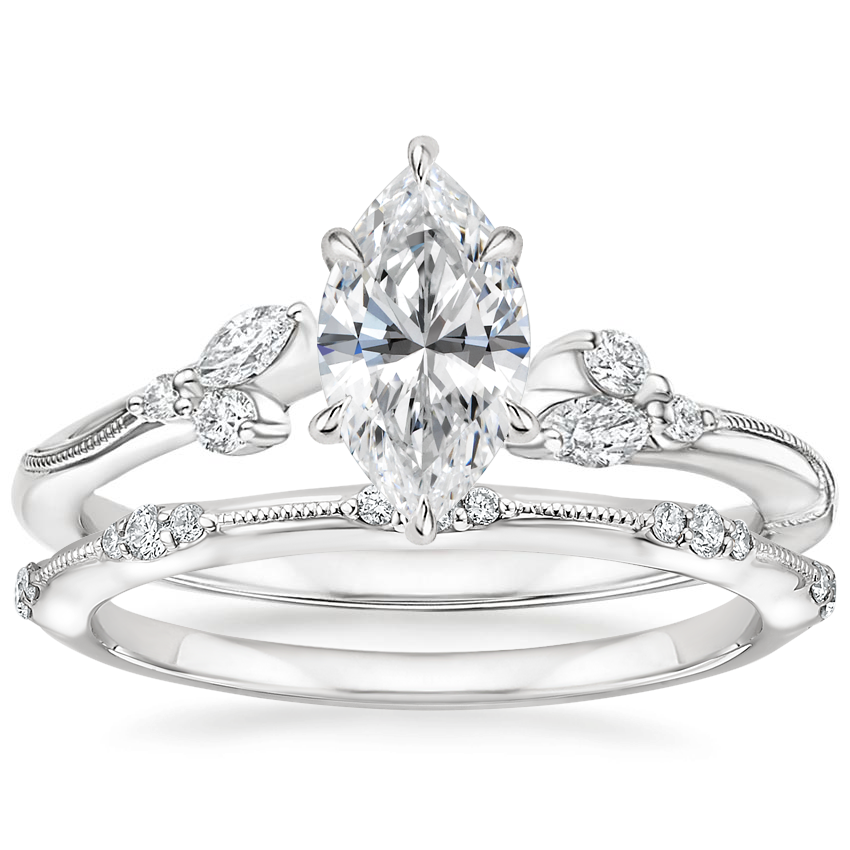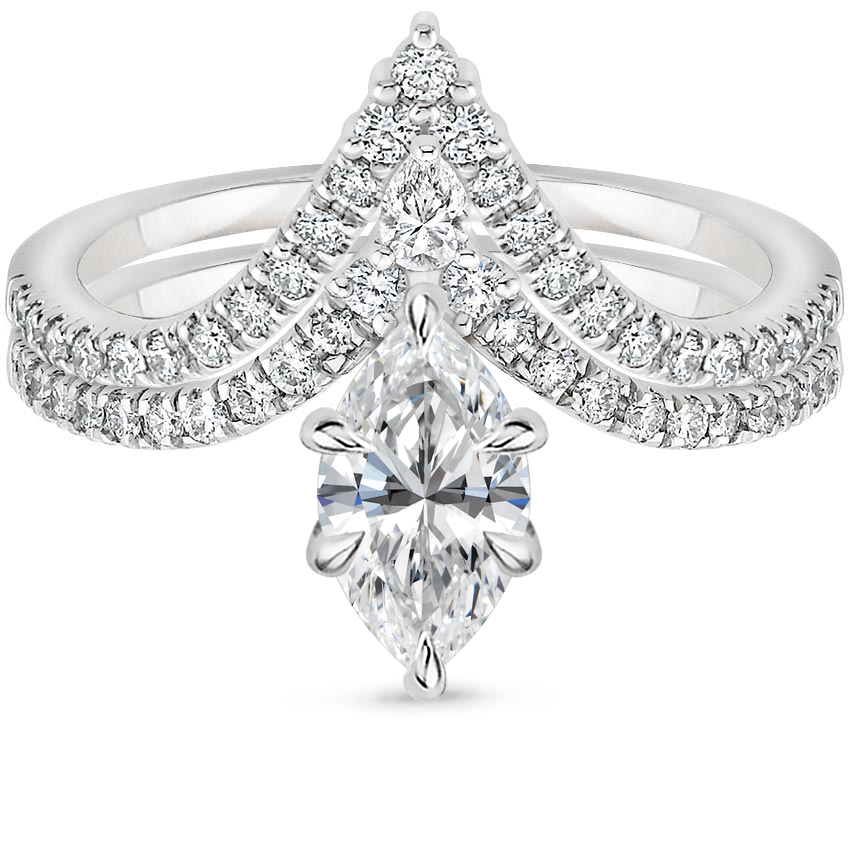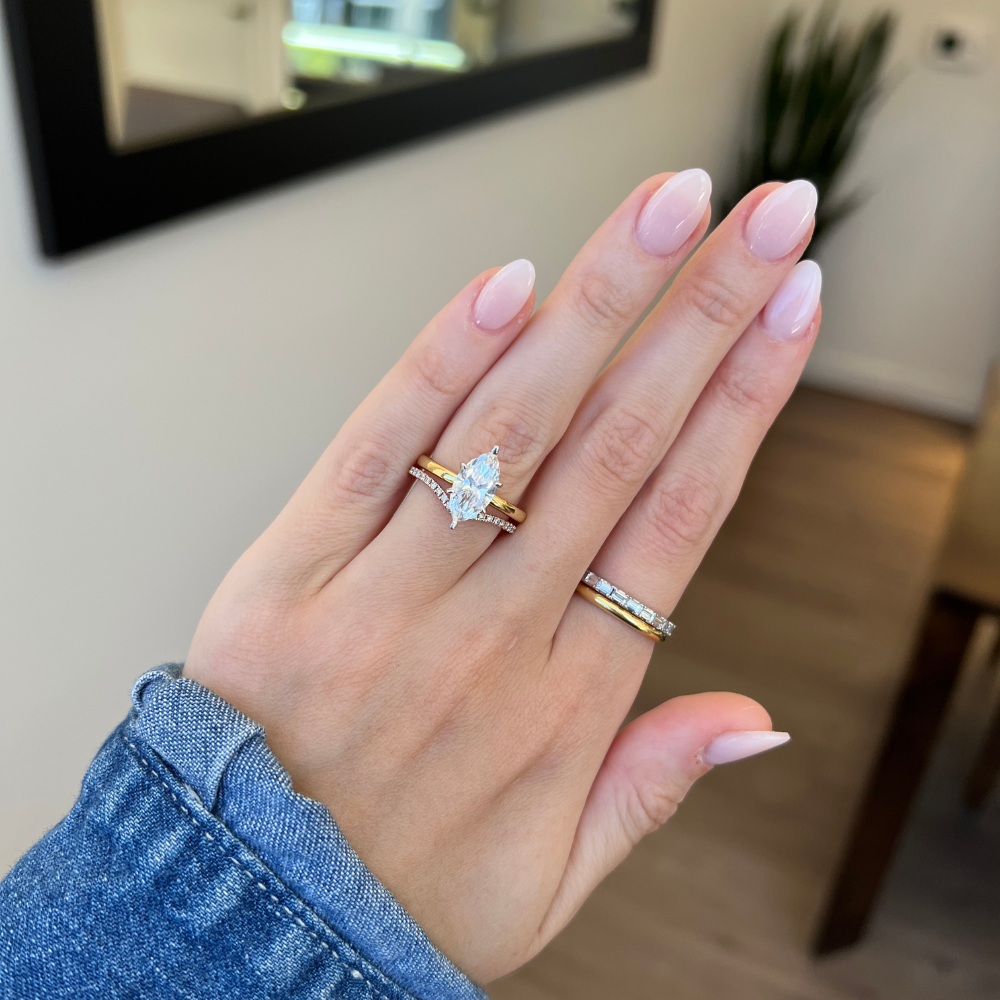
The marquise cut, known for its elongated shape and pointed ends, offers a unique and elegant appearance that can be accentuated with the right wedding band. This guide will help you navigate the various options available, providing you with the knowledge to make a decision that enhances the beauty of your engagement ring and fits your style.
What is the best wedding band for a marquise engagement ring?
Selecting the best wedding band for a marquise engagement ring requires considering the ring’s design and your preferences. The key is to find a band that complements the marquise cut without overwhelming it. The marquise diamond’s distinctive shape can create a stunning contrast when paired with certain band styles.
The most suitable wedding bands for marquise rings typically include curved bands and straight bands with intricate detailing. Each of these options provides a different aesthetic, allowing you to choose a band that either emphasizes the marquise diamond or offers a subtle accompaniment.

Solitaire Marquise Engagement Rings with Wedding Bands
A solitaire marquise engagement ring, characterized by a single marquise diamond set on a plain or simple band, offers a timeless and classic look. Pairing this style with the right wedding band can either maintain its simplicity or add a touch of flair, depending on your preference.
Curved Bands: A curved wedding band is an excellent choice for a solitaire marquise engagement ring. The gentle curve of the band follows the contour of the marquise diamond, ensuring a seamless fit and creating a cohesive look. This type of band can be adorned with small diamonds or left plain, depending on your desired level of embellishment.
Straight Bands: For those who prefer a more traditional look, a straight wedding band can be paired with a solitaire marquise ring. While this option doesn’t conform to the diamond’s shape, it offers a classic, understated appearance that can be enhanced with diamonds or other gemstones.
Freesia Ring with Sia Diamond Open Ring
Halo Marquise Engagement Rings with Wedding Bands
Halo marquise engagement rings feature a central marquise diamond surrounded by a halo of smaller diamonds, adding extra sparkle and brilliance.
Thin Pave Bands: A thin pave wedding band is a popular choice for halo marquise engagement rings. The small, closely set diamonds in the band enhance the ring’s overall sparkle without competing with the halo. This style creates a cohesive and glamorous look that highlights the marquise cut’s brilliance.
Plain Metal Bands: A plain metal wedding band offers a minimalist approach when paired with a halo marquise ring. This option allows the engagement ring to take center stage, with the wedding band providing a subtle and elegant accompaniment. The simplicity of a plain band can enhance the halo’s brilliance by not adding any additional distractions.
Waverly Diamond Bridal Set
Three Stone Marquise Engagement Rings with Wedding Bands
Three stone marquise engagement rings feature a marquise diamond flanked by two smaller stones. This design symbolizes the past, present, and future, making it a meaningful choice for many couples. Choosing a wedding band to complement this style involves balancing the additional stones without detracting from the central marquise diamond.
Contoured Bands: A contoured wedding band is ideal for a three-stone marquise engagement ring, as it can be designed to fit around the side stones for a perfect match. This type of band helps maintain the ring’s overall symmetry and can be adorned with additional small diamonds or left plain for a more subtle effect.
Selene Diamond Ring with Petite Curved Wedding Ring
Vintage Style Marquise Engagement Rings with Wedding Bands
Vintage-style marquise engagement rings often feature intricate detailing, such as filigree, milgrain, and engraved patterns, reminiscent of earlier design eras.
Milgrain Bands: A milgrain wedding band features tiny bead-like detailing along the edges and is a perfect match for a vintage-style marquise engagement ring. This design adds a touch of old-world charm and elegance, echoing the intricate details found in many vintage rings.
Filigree Bands: Filigree wedding bands, which feature delicate, lace-like metalwork, are another excellent option for vintage marquise rings. The intricate designs of filigree bands complement the ornate details of a vintage ring, creating a cohesive and vintage-inspired look.
Camellia Diamond Ring with Alena Diamond Ring
Whether you prefer the simplicity of a solitaire setting, the brilliance of a halo, the symbolism of a three-stone design, or the charm of a vintage style, there is a wedding band that will complement your marquise engagement ring beautifully. By considering the options outlined in this guide, you can confidently choose a wedding band that enhances your ring’s unique beauty and reflects your personal style.


